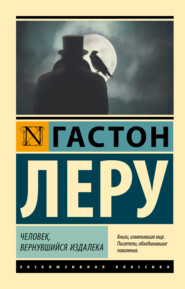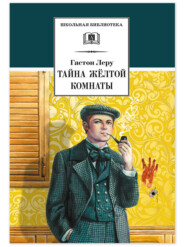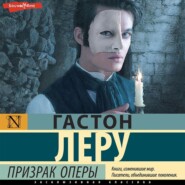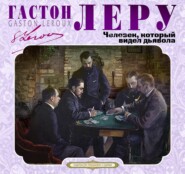По всем вопросам обращайтесь на: info@litportal.ru
(©) 2003-2024.
✖
The Bride of the Sun
Автор
Год написания книги
2018
Настройки чтения
Размер шрифта
Высота строк
Поля
Maria-Teresa was frankly laughing at her aunt’s intense seriousness, only equaled by gravity with which Uncle Francis listened. The savant looked at her smiling face half disapprovingly, and brought his scientific knowledge to the defense of the old ladies. Everything they said corresponded perfectly with what well-known writers and explorers had been able to discover about the Virgins of the Sun. There was no doubt that human sacrifice had been rife among the Incas, both in honor of the Sun and for the King himself, many of the victim» going to the altar of their own free will. This was particularly the case when an Inca died—it was like Suttee of the East.
“Prescott and Wiener, the greatest authorities on the subject, are agreed,” said Uncle Francis. “Prescott tells us that at one royal burial, more than a thousand people, wives, maids and servants of the Inca, were sacrificed on his tomb.”
Aunt Agnes shuddered, while Irene, bending her head, made the sign of the Cross.
“All this is very true, my dear sir,” said Don Christobal, carrying on the conversation, “and I see that our Geographical Society here will be able to give you very little that is new to you. Would it interest you to visit our latest excavations at Ancon to-morrow? There is ample proof there that Suttee was practised among the Incas.”
“What exactly were these Virgins of the Sun?” asked Dick, turning to his uncle, who, delighted to be able to show his erudition, at once launched into an explanation.
“The Virgins of the Sun, or the ‘elected ones,’ as they were called, were young girls, vowed to the service of the divinity. They were taken from their families as children, and put into convents where they were placed under the care of women called mammaconas,—girls who had grown old in these monasteries. Under the guidance of these venerable matrons, the virgins were taught their religious duties, weaving and embroidery were their chief occupations, and it was they who made the fine vicuna wool for the hangings of the temples and the Inca’s home and attire.”
“Yes,” said gray-haired Irene, “but their chief duty was to guard the sacred fire acquired anew by the temple at each Raymi festival.”
“That is so,” replied the savant. “They lived absolutely alone. From the moment they entered the home, they were entirely cut off from their families and friends. The Inca alone, and his queen, the Coya, were allowed within the sacred precincts. The most rigid discipline and supervision were exercised over them.”
“And woe to the girl who transgressed,” added Aunt Irene. “By Inca law she was buried alive, while the town or village from which she came was razed to the ground and ‘sown with stones,’ so that all memory of it should be lost.”
“You are perfectly right, madam,” agreed Uncle Francis.
“Sweet country!” Dick exclaimed.
“What an amazing civilization they must have possessed,” continued Uncle Francis. “The ceremonies of their temples are almost identical with those of ancient Rome.... Little did Christopher Columbus think, when he saw a few painted savages, that on the other seaboard, behind this belt of primitive land and tribes, there was a whole world with its customs, monuments, laws and conquests. Two empires, sir: that of the Aztecs in Mexico, that of the Incas in Peru. And with civilizations rivaling that of the Mediterranean. It is as if an Eastern prince, reaching the steppes of Scythia, had claimed the discovery of Europe, returning to his States without knowing that Rome existed, and convinced that the rest of the world was a howling waste!”
“He must have been a bit of a fool,” hazarded Dick. “A true conqueror guesses there are new lands to conquer even before he sees them.”
“Like Pizarro and Cortes!” exclaimed the Marquis.
“Who came to destroy everything…” began Uncle Francis. Fortunately, Don Christobal did not hear him, and he stopped in time. Maria-Teresa, seated opposite the savant, had trodden on his foot, and he bit his lip, remembering that de la Torre, the Marquis’ ancestor, had been one of Pizarro’s “destroyers.”
Both old ladies, however, had heard, and opened their eyes at this denunciation of a cause which to them was that of the true faith against the infidel. Maria-Teresa, anxious to smooth matters over, quickly brought them back to their Inca legends.
“All this is very fine,” she said, “but there is nothing to show that the Indians still sacrifice human brings.”
“How can you say that!” they exclaimed in chorus.
“Well, has anybody ever had definite proof of it?”
Aunt Agnes was not to be shaken in her convictions.
“When I was a little girl,” she declared, “I had an old nurse who belonged to one of the Lake Titicaca tribes of Quichuas. She told me that she herself had seen three Spanish girls walled up alive at three successive Interaymi fêtes.”
“Where did the girls come from?” asked Dick.
“They were Lima girls.”
“But then, any number of people must have known of it,” he answered, secretly amused by the grave airs of the two old ladies.
“It was, and is, common property,” retorted Aunt Agnes. “The names of their last two victims were known to everybody. One vanished ten years ago, and the other ten years before that.”
“Yes, yes, common property!” laughed Don Christobal.
“There is nothing to laugh about, Christobal,” said Aunt Agnes drily.
And the duenna repeated in a low voice, “No, no, nothing to laugh about.”
The Marquis was determined to have his laugh.
“Let us mourn the poor children,” he said, groaning. “Cut off from the affection of their parents at so early an age! How terrible!”
“Christobal, can you tell me what became of Amelia de Vargas and Marie Cristina de Orellana?”
“Yes, what became of them?” urged Irene.
“There we are!… the old story! I expected it!” exclaimed the Marquis.
“You might speak seriously! You knew Amelia de Vargas....”
“A charming girl… the sweetest smile in the city!… That was twenty years ago.... How time flies!… Yes, she disappeared… with a poor cousin.”
“I heard the other day that it was a toreador,” interjected Maria-Teresa. “They revive that old story every ten years, at the time of the Interaymi.”
“She disappeared outside the bull-ring,” explained Aunt Agnes. “There was a fight in the crowd, and she was separated from her parents. Nobody ever saw her again. Afterwards, some people remembered catching sight of her surrounded by a group of Indians. She died at their hands, walled up alive.”
“What a gorgeous imagination crowds have! But the fact remains that that poor cousin of hers disappeared about the same time.”
“So you are pleased to say, Christobal. But what of Maria Cristina de Orellana?”
“Oh, that was another matter… a very sad case. She was out for a walk with her father round the Cuzco, and went into one of the caves, never to reappear. She lost her way in the old subterranean passages, of course. The government had all the entrances blocked up after that.”
“And since then,” commented Aunt Agnes, “her poor father has been a madman. For the past ten years, he has haunted the Cuzco ruins, calling in vain to his daughter. He, at all events, will not believe that she was not carried off by the Indians.”
“But you yourself say he is mad.”
“He lost his reason when he acquired the certitude that she had perished in their temple. A few days before she vanished, Maria-Cristina mysteriously received a very old and very heavy gold bracelet. That bracelet had a center plaque representing the sun....”
“My dear Agnes, you know that in this country jewelers stick the sun in wherever and whenever they can.”
“That bracelet was the real one… the same one that was sent to Amelia.”
“Are you not exaggerating, Agnes? Really, really!… And with stories like these running about, they expect poor historians to be accurate!… I hope you are not taking notes of all this, Mr. Montgomery.”
“I am exaggerating nothing,” retorted Aunt Agnes obstinately. “It was the real Golden Sun bracelet.... Every ten years since Atahualpa, the last Inca king, was burned alive by Pizarro, the Inca priests have sent it to a Spanish girl they had chosen to be the Bride of the Sun. And every one of them has been walled up alive.... I remember that poor Orellana girl laughing and joking about the Golden Sun bracelet! The whole town knew about it.”
“The whole town always does have a pretty lively imagination at the time of the Interaymi,” insisted the Marquis. He turned to Mr. Montgomery. “You have no idea, my dear sir, how hard it is for our Society to get away from all these weird legends.”
“Legends are not things to be despised in research work,” disagreed Uncle Francis. “For my part, I am delighted to have found a country where they are still so living.”
At this moment a servant came in with a small parcel on a silver tray.

















